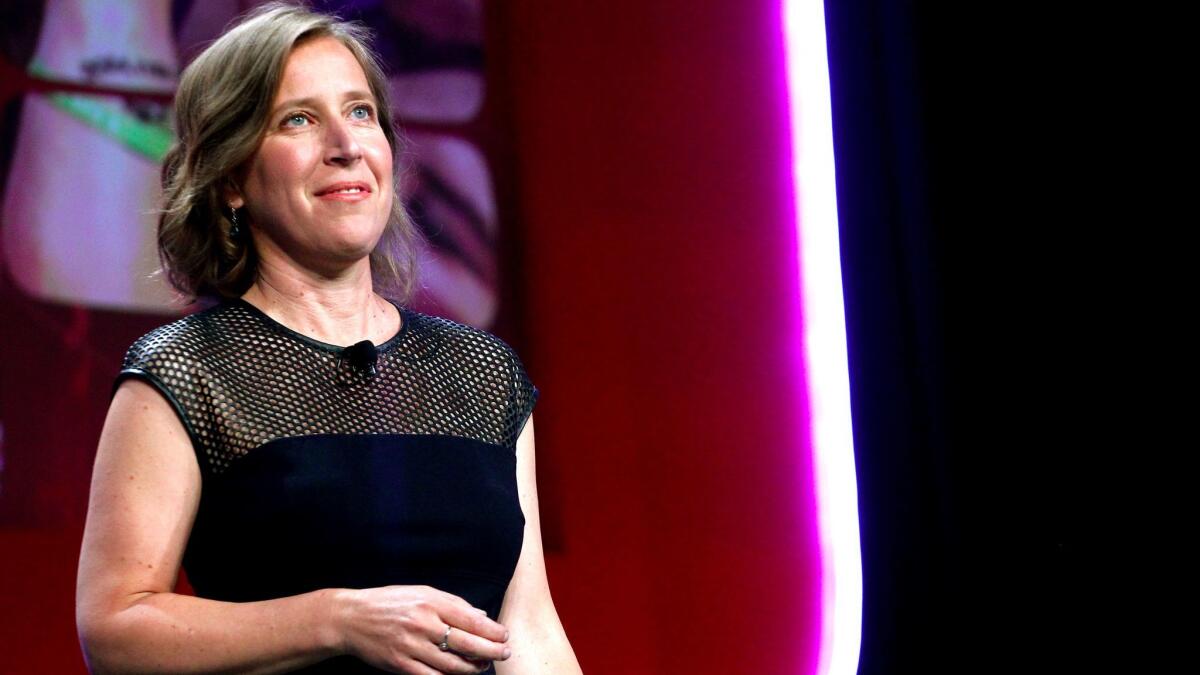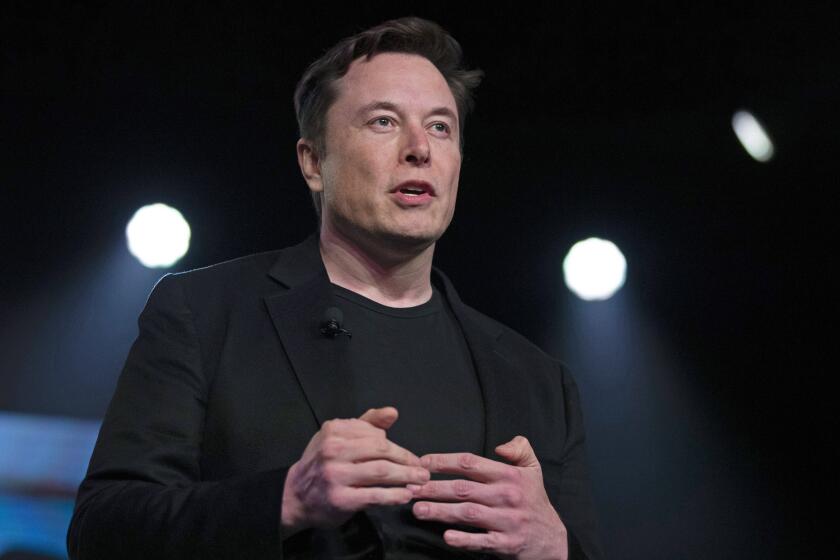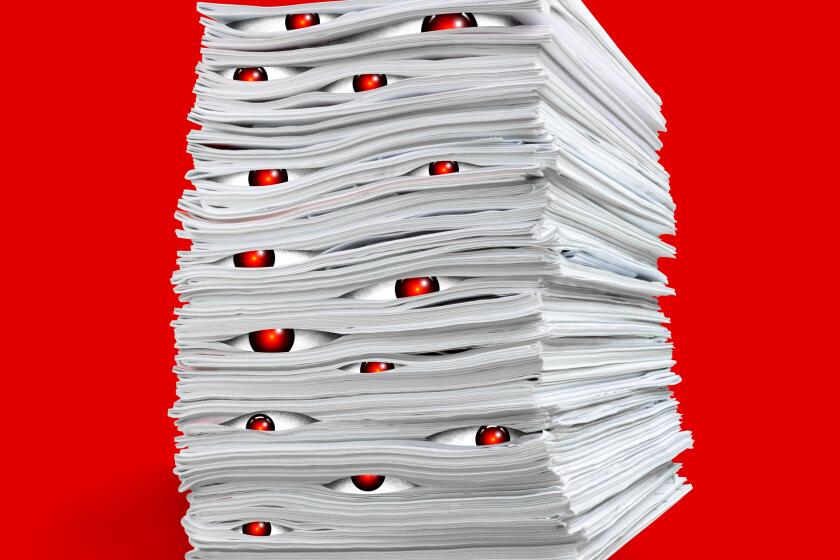YouTube program gives women creators a ‘fighting chance’ at ad deals
- Share via
Last summer, Ari Fitz set herself a goal to create a YouTube video every day.
Anyone can record a video of themselves and put it online. But Fitz made it her full-time job — many of her videos required planning, art direction and editing.
“On a scale from 0 to 100, I’d say I’m at 97,” the 27-year-old from downtown Los Angeles said of the work that goes into her videos, which include compilations from trips to Palm Springs and Copenhagen, as well as humor skits and commentary about gender.
More than 220,000 people have subscribed to Fitz’s YouTube channel, and her videos regularly draw more than 100,000 views. She has fans who support her on crowdfunding site Patreon and hang on to her every word. Sometimes she even gets paid to host or speak at events around the country.
But in the world of YouTube, where the biggest stars boast millions of subscribers, millions more in video views, and lucrative branding deals, Fitz hasn’t quite made it yet. And YouTube wants to change that.
This summer, Fitz will join 10 other female YouTube content creators such as Iskra Lawrence, Akilah Hughes, Joanna Hausmann, Yanyi When, and Taren Guy in a new program called Supercharger, where they will spend eight weeks in New York at YouTube Spaces getting a crash course in building their businesses. YouTube is expected to announce the inaugural program Thursday at VidCon, the annual conference for online video stars, in Anaheim.
The curriculum will cover topics such as how to turn an idea into a video series, how to do script development and set up production schedules, and how to pitch ideas to advertisers and network executives, who increasingly rely on online stars known as influencers to generate awareness and buzz for new shows. They can earn a few thousand dollars to several million.
The program is being launched in partnership with ad agency and media buyer IPG, and will let creators rub shoulders with some of IPG’s clients, who could become potential sponsors of their shows.
“We look for groups of creators who we think can be the next big YouTube star,” said Jamie Byrne, director of YouTube Creators. He added that Youtube plans on offering the program several times a year to different groups of creators. The first group consists only of women.
“In the media, women are often put into very specific roles, and they maybe don’t get to express their voice in the way they want to,” Byrne said. “Supercharger is a great way for us to help emerging female creators to tell their own story in their own voice.”
There is little data available that show a disparity between the kinds of deals male and female YouTube creators get. Nor is there evidence of women being an under-represented group on YouTube’s platform. Nonetheless, it’s still a good public relations move for the company, said David Craig, a USC professor and Peabody Fellow who studies contents creators.
YouTube’s chief executive, Susan Wojcicki, has been vocal in her support for diversity in the technology industry, and so making the first Supercharger group women-only is an example of the company putting its money where its mouth is, Craig said.
But it also makes smart business sense. Now that YouTube has amassed an audience of more than a billion people, it has to make sure that the audience is engaged if it wants to maximize ad dollars. The Google-owned company faced a backlash from advertisers in March after ads appeared next to racist or extremist videos. Following the "brand safety concerns," YouTube has been working assiduously to lure back big-name advertisers.

In the past, advertisers mostly cared about how many viewers they could reach, Craig said. But today, analytics has allowed advertisers to pinpoint what people are watching and what they’re buying, and they’ve found that it’s more valuable to have a smaller, devoted audience than it is to have a huge audience that doesn’t care.
“You want a person with 10,000 followers, whose audience hangs on to their every word, more than you want someone with a million followers whose audience isn’t paying attention,” Craig said.
Which is why YouTube is making bets on creators such as Fitz, whose charisma can keep an audience engaged for six minutes while she talks about body hair. Or Vanessa Hill, whose 360,000 subscribers regularly tune in to watch her explain facets of the brain using crafts.
It’s also in YouTube’s interest that these creators are able to make enough money from what they do so they can keep creating content for the platform.
Fitz cobbles together a living from her crowdfunding Patreon account, sporadic speaking engagements and revenue from Youtube advertisements. She declined to reveal how much she makes from YouTube’s ads, but said it is far from enough to live off. Her earnings from ad revenue fell this year following YouTube’s advertiser backlash in March. And while YouTube has updated its policies to curb offensive content and make its platform more advertiser-friendly, creators such as Fitz are still reeling, with her ad revenue down 80% from earlier this year, she said.
Vanessa Hill, 30, of New York, also makes Youtube videos full-time. She also declined to reveal how much she makes, but described the job as being like a freelancer where she has to find different ways to bring in money.
“You have ads on YouTube, some people sell merchandise, others do work on the side,” she said.
Hill has the benefit of a partnership with PBS, but, like Fitz, she is mostly a one-woman show who writes, films, hosts and edits her shows herself, and hasn’t had any formal training or experience in how to build a sustainable career on YouTube.
YouTube, for its part, has made free resources available to its millions of creators, offering tips on how to tag videos, how to pick thumbnails and how to grow an audience. When it comes to securing brand partnerships — which is where the big bucks are — many creators are less sure of what to do.
“It’s difficult for a lot of people working out of their homes, especially if they’re a one-man show,” said Raina Penchansky, co-founder and co-CEO of Digital Brand Architects, an agency that represents digital influencers. “They don’t necessarily have the perspective or a team around them explaining to them what’s taking place in the market.”
And while YouTube creators may have the fresh voices that advertisers want, they don’t always speak the language of the advertising industry, which can make it challenging for them to pitch their shows and secure deals.
“I’ve never been in a situation where I have to go give an in-person pitch for an idea I have,” said Hill, who sees the program as an opportunity to build a sustainable career as a full-time YouTuber.
“I can already tell that the biggest takeaway I’m going to get from this is the ability to present and pitch my ideas to various stakeholders and actually have a fighting chance,” said Fitz. “To be instilled with a thick layer of confidence will help me go far.”




